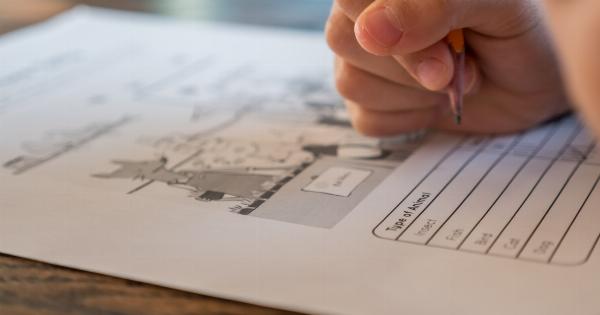Firefighters are brave individuals who put their lives on the line every day to protect us and our communities from the devastating effects of fires.
They possess certain instincts that enable them to react swiftly and effectively in hazardous situations. In addition to their heroic actions, firefighters are also known for their iconic yellow color uniforms, which have become synonymous with their profession.
In this article, we will explore the connection between firefighters, the color yellow, and the instincts that make them exceptional at what they do.
The Symbolism of Yellow
The vibrant yellow color of a firefighter’s uniform is not just a matter of aesthetics. It holds profound symbolism that goes beyond mere visibility. Yellow is a color often associated with optimism, energy, and warmth.
It generates a feeling of hope and security, which is vital in crisis situations. The bright yellow hue of firefighters’ attire signifies their role as beacons of safety and protection in times of distress.
It also helps them stand out in the hazards they work in, making them easily identifiable and instilling a sense of reassurance in both victims and fellow firefighters.
The Psychological Impact
The color yellow has a significant psychological impact on both those wearing it and those around them. Research has shown that yellow stimulates mental activity, promoting quick thinking and decision-making.
This is crucial for firefighters who must make split-second choices that can mean the difference between life and death. The color also sparks feelings of confidence and courage, empowering firefighters to face dangerous situations head-on.
Additionally, the bright yellow uniform has a positive effect on victims, providing them with a sense of security and trust in the abilities of the firefighters attending to their needs.
Instinctive Behavior in Firefighters
Firefighters possess a unique set of instincts that allow them to navigate hazardous environments and respond effectively to emergencies.
These instincts are honed through rigorous training and years of experience, making them second nature to those in the profession.
1. Situational Awareness
One of the primary instincts that firefighters develop is an acute sense of situational awareness. They are trained to observe their surroundings, identify potential risks, and anticipate how a situation might evolve.
This awareness allows them to make informed decisions and respond rapidly to changing circumstances, ensuring the safety of both themselves and those they are rescuing.
2. Teamwork and Collaboration
Firefighters understand the importance of teamwork in their line of work. They instinctively cooperate and collaborate with their fellow firefighters, recognizing that success depends on the collective efforts of the whole team.
Solidarity and trust among team members are paramount as they rely on each other in high-pressure situations. The ability to work seamlessly in unison is an instinct developed through rigorous training and reinforced by the camaraderie that exists within the firefighting community.
3. Physical and Mental Resilience
Firefighting is physically demanding and mentally taxing. Firefighters build resilience through their training, conditioning their bodies and minds to withstand the challenges they may encounter.
They develop endurance, flexibility, and strength, enabling them to operate efficiently in extreme conditions. Furthermore, firefighters cultivate mental resilience, allowing them to stay focused and composed amidst chaos and danger.
This instinctive resilience allows them to overcome adversity and fulfill their duty, even in the face of extraordinary circumstances.
4. Effective Communication
Clear and concise communication is vital in any firefighting operation. Firefighters instinctively develop excellent communication skills, enabling them to relay critical information efficiently.
They are trained to transmit accurate and concise messages, ensuring that everyone involved in the operation understands their roles and the plan of action. Effective communication minimizes confusion, enhances coordination, and ultimately saves lives.
5. Risk Assessment and Decision-making
Firefighters are trained to assess risks quickly and make informed decisions accordingly.
Through experience, they develop a natural instinct to evaluate the potential dangers in a given situation, allowing them to determine the most appropriate course of action. This instinctive risk assessment and decision-making process is crucial in preventing further harm and ensuring the efficient allocation of resources.
6. Adapting to Change
No two firefighting scenarios are the same, and conditions can change rapidly. Firefighters possess an instinctive ability to adapt and respond flexibly to evolving situations.
They understand the need to adjust their strategies and tactics on the spot to ensure the best possible outcome. This adaptability is a result of their extensive training, which prepares them for a wide range of scenarios and equips them with the necessary skills to tackle unforeseen challenges.
7. Problem Solving
Effective problem-solving is a fundamental instinct in firefighters. They are trained to think critically and find innovative solutions to complex problems while under immense pressure.
Firefighters possess the ability to analyze situations quickly and devise appropriate strategies to tackle them. Their instinctive problem-solving skills often save lives and prevent further damage.
8. Protective Instincts
Firefighters possess a natural protective instinct that drives them to put themselves in harm’s way to save others. This selflessness is a core characteristic of those in the profession.
They readily place the well-being of others above their own, demonstrating exceptional courage and empathy in the face of danger and adversity.
9. Emotional Intelligence
Firefighters deal with emotionally charged situations on a regular basis. Their instinctive emotional intelligence allows them to empathize with those they rescue and provide the necessary support and reassurance.
They instinctively recognize the importance of offering comfort in times of crisis and excel at providing both physical and emotional aid to those affected.
10. Continuous Learning and Adaptation
Firefighters understand the importance of continuous learning and adaptation. With advancements in technology and changes in fire dynamics, they instinctively seek opportunities to expand their knowledge and skills.
They demonstrate a willingness to adapt to new techniques, equipment, and best practices in order to improve the effectiveness and safety of their operations.
Conclusion
Firefighters are exceptional individuals who possess a unique set of instincts that enable them to protect lives and property in the face of fiery danger.
These instincts, which come naturally to them through rigorous training and experience, allow them to navigate hazardous environments, communicate effectively, and make split-second decisions. The iconic yellow color of their uniforms further symbolizes their role as beacons of hope, security, and protection.
As we admire their bravery and selflessness, let us also recognize and appreciate the instincts that make firefighters exceptional in their noble profession.





























